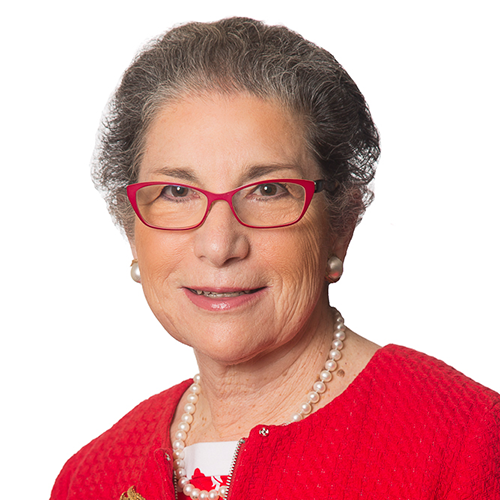UCLA survey reveals COVID-related hate incidents among Asians, Native Hawaiians and Pacific Islanders in California continue to rise
2022 preliminary estimates from the California Health Interview Survey, led by Dr. Ninez Ponce, show long-term health impacts from COVID-19.
Since the early days of the COVID-19 pandemic, the United States has seen an alarming rise in hate incidents targeting Asian Americans and Pacific Islanders, prompting the passing of the COVID-19 Hate Crimes Act, which was signed by President Biden in May 2021.
Newly-released data by the UCLA Center for Health Policy Research’s California Health Interview Survey (CHIS) found that more than 1 in 12 (8%) Asian American, Native Hawaiian, and Pacific Islander (AANHPI) adults in California experienced a hate incident due to COVID-19. Of those who experienced a hate incident, 84% said they sustained verbal abuse or insults.
The survey also found that more than 1 in 5 (22%) AANHPI adults had witnessed another AANHPI person being treated unfairly due to their race/ethnicity. The findings are part of a series of COVID-related questions asked of AANHPI adults between February and May 2022, and made available on the CHIS Preliminary COVID-19 Estimates Dashboard.
“The California Health Interview Survey 2020 data found that about 4% of Asian Americans, Native Hawaiians, and Pacific Islanders had been treated unfairly because of their race/ethnicity due to the COVID-19 pandemic. The data released today show that percentage has doubled,” said Dr. Ninez Ponce, the UCLA Fielding School of Public Health’s Fred W. and Pamela K. Wasserman professor and chair of the Department of Health Policy and Management, who also serves as UCLA CHPR director and CHIS principal investigator. “Hate incidents can cause long-term psychological and physical trauma, so it’s critical that we provide timely data on often overlooked racial and ethnic groups so that decision-makers can take steps to put an end to hate incidents in California.”
In addition to the AANHPI data, CHIS released June 2022 findings from a series of COVID-19 questions on Californians’ experiences with long COVID, views on vaccines and boosters, personal and financial impacts of the pandemic, and risk reduction behaviors.
About 1 in 3 (33%) California adults who have had COVID-19 are experiencing long COVID symptoms. Lower-income adults were more than twice as likely to experience long COVID compared to the highest-income adults: 52% of adults at 0–99% of the federal poverty level (FPL) and 53% of adults at 100–199% FPL had long COVID, compared to 22% of adults at 300% FPL and above.
More California adults went maskless in June 2022, with more than 1 in 5 (22%) California adults saying they never wore a mask when leaving their home in the past week, compared to 8% who never wore a mask in February–March 2022.
Additional findings from the June 2022 release:
Risk Reduction Behaviors
• About 1 in 2 Asian (50%) and Black or African American (52%) adults and more than 1 in 3 (37%) of Latinx adults said they always wore a mask, compared to 1 in 5 (20%) white adults.
• 45% of adults in Los Angeles County said they always wore a mask when leaving their homes compared to 14% of adults in Northern/Sierra counties and the Sacramento area. Among other California regions, 20% of adults in the Central Coast, 25% of adults in other Southern California regions, and 36% of adults in the San Joaquin Valley and Greater Bay Area always wore a mask.
COVID-19 Vaccines and Boosters
• More than half (53%) of California adults that were not fully vaccinated cited concerns about side effects as the reason why they weren’t vaccinated. More than 1 in 3 unvaccinated adults said the vaccine is unnecessary (38%) or the vaccine was developed too quickly (36%).
• 1 in 10 (10%) fully vaccinated California adults were not at all likely or not very likely to receive a COVID-19 booster shot.
• 70% of fully vaccinated older adults ages 65+ have already received a booster, compared to 49% of adults ages 18–64.
Financial Impacts of the Pandemic
• 1 in 6 (17%) California adults experienced a reduction in income or work hours.
• More than 1 in 5 (21%) California adults with the lowest incomes (0–99% of the federal poverty level) lost their jobs due to layoffs, business closures, and market changes, more than double the 8% of California adults with the highest incomes (300% of the federal poverty level and above) who lost their jobs.
Source of COVID-19 News and Information
• 35% of California adults got most of their COVID-19 information from television, which was the top source. Social media came in second with 20% and newspaper and government agencies were both the top source for 10% of Californians.
• Adults ages 65 years and older were twice as likely as adults ages 18–64 to get their COVID-19 news from television: 57% vs. 29%. About 1 in 4 (24%) adults ages 18–64 got most of their COVID-19 news from social media, six times higher than adults ages 65 years and older (4%).
Asian American, Native Hawaiian, and Pacific Islander (AANHPI)-Specific Questions
• 13% of AANHPI adults had difficulties performing work due to poor internet or lack of computer.
• AANHPI adults were more positive about the local government’s response to COVID-19 compared to the federal government: Nearly 2 in 3 (64%) AANHPI adults said they agree or strongly agree that the local government had done a good job managing the COVID-19 outbreak compared to 50% who agree or strongly agree that the federal government had done a good job. About 1 in 4 (24%) AANHPI adults disagree or strongly disagree that the federal government had done a good job.
• Among AANHPI adults who experienced financial difficulties due to COVID-19, 54% had trouble paying utilities, and 49% had trouble paying rent.

EMPH Academic Program Director with expertise in healthcare marketing, finance, and reproductive health policy, teaching in the EMPH, MPH, MHA program

Professor of Community Health Sciences & Health Policy and Management, and Associate Dean for Research
Nationally recognized health services researcher and sociomedical scientist with 25+ years' experience in effectiveness and implementation research.

Dr. Ron Andersen is the Wasserman Professor Emeritus in the UCLA Departments of Health Policy and Management.





















